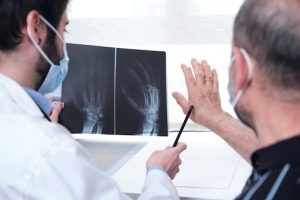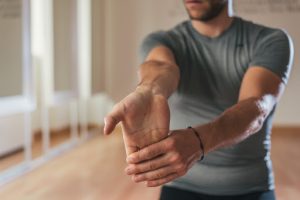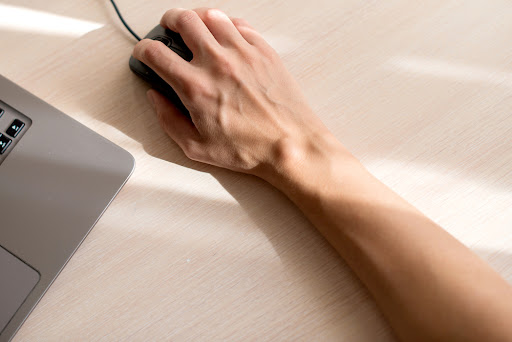Do you suffer from a ganglion cyst? If so, you know how painful and limiting it can be. Ganglion cysts are common lumps that can form near joints, particularly in the wrist or hand, and they can make it difficult to perform daily tasks or enjoy your favourite hobbies. Fortunately, physical therapy can be an effective way to manage ganglion cysts and reduce your pain. By learning about exercises and rehabilitation techniques that target your specific symptoms, you can get back to doing the things you love.
If you’re unfamiliar with ganglion cysts and how they impact your daily life, you’re not alone. Many people don’t even realise they have a ganglion cyst until it starts causing pain or discomfort. These fluid-filled sacs can form on or around joints and tendons, and they often grow slowly over time. While ganglion cysts are usually harmless, they can cause a great deal of pain and swelling, and they can even limit your range of motion. That’s where physical therapy comes in. With the right exercises and rehabilitation techniques, you can manage your symptoms and get back to your regular routine.
Ganglion Cyst Symptoms and Diagnosis
Common Symptoms Of Ganglion Cysts
Ganglion cysts can vary in size and location, but they typically appear as round or oval bumps on the wrist, hand, or fingers. They are often painless, but if they press against a nerve, they can cause pain, tingling, or numbness in the affected area. In some cases, ganglion cysts can limit the range of motion in the wrist or hand, making it difficult to perform everyday activities such as gripping, typing, or writing.
Diagnosis And Assessment Of Ganglion Cysts
To diagnose a ganglion cyst, a physical therapist or medical professional will typically perform a thorough examination of the affected area. This may include a physical exam, imaging tests, such as an X-ray or ultrasound, and a review of your medical history. In some cases, a doctor may also perform a needle aspiration, which involves removing fluid from the cyst to confirm the diagnosis.
Understanding the symptoms and diagnosis of a ganglion cyst is the first step in managing the condition. With the help of physical therapy and rehabilitation techniques, you can reduce pain, improve your range of motion, and regain control of your daily life.

Physical Therapy for Ganglion Cysts in the Wrist
Physical therapy is an essential part of the treatment plan for ganglion cysts, providing patients with targeted exercises and rehabilitation techniques that can help alleviate pain, improve mobility, and reduce the risk of recurrence. Physical therapy for ganglion cysts focuses on a combination of manual therapy, stretching, strengthening exercises, and education, aimed at restoring optimal function and reducing the impact of the cyst on daily life.
Assessment And Treatment Plan For Ganglion Cysts In The Wrist
The initial assessment for a ganglion cyst in the wrist will typically involve a thorough examination of the affected area, including a review of symptoms and medical history. Based on this assessment, a physical therapist will develop a personalised treatment plan that includes specific exercises and rehabilitation techniques tailored to the individual’s needs and goals. This plan may also include education on proper body mechanics and posture, as well as strategies for managing pain and improving function.
Specific Exercises And Rehabilitation Techniques For Wrist Ganglion Cysts
Physical therapy exercises and rehabilitation techniques for wrist ganglion cysts may include a range of manual therapy, stretching, and strengthening exercises, aimed at improving mobility, reducing pain, and preventing recurrence. Manual therapy techniques may include massage, joint mobilisation, and soft tissue mobilisation, aimed at reducing swelling and inflammation in the affected area. Stretching exercises may be used to improve flexibility and range of motion while strengthening exercises can help build muscle and improve joint stability.

Some specific exercises and techniques that may be used in physical therapy for wrist ganglion cysts include:
Wrist Flexor Stretch: This stretch targets the muscles on the underside of the forearm, helping to reduce tension and improve mobility in the wrist. To perform this stretch, start by extending your arm in front of you, with your palm facing down. Use your other hand to gently press your fingertips back towards your wrist, holding the stretch for 30 seconds before releasing.
Wrist Extension Stretch: This stretch targets the muscles on the top of the forearm, helping to improve mobility and reduce pain in the wrist. To perform this stretch, start by extending your arm in front of you, with your palm facing up. Use your other hand to gently press your hand and fingers down towards the ground, holding the stretch for 30 seconds before releasing.
Wrist Curl: This strengthening exercise targets the muscles in the wrist and forearm, helping to build strength and improve joint stability. To perform this exercise, start with your arm extended in front of you, with your palm facing up. Hold a light weight or resistance band in your hand, and slowly curl your wrist up towards your forearm, then lower it back down. Repeat for 10-15 repetitions, then switch sides.
Forearm Pronation/Supination: This exercise targets the muscles in the forearm, improving mobility and flexibility in the wrist. To perform this exercise, hold a light weight or resistance band in your hand, with your elbow bent at a 90-degree angle and your palm facing up. Slowly rotate your forearm and wrist so that your palm faces down, and then rotate it back up so that your palm faces up again. Repeat this motion for several repetitions, then switch to the other arm.
Physical Therapy for Other Types of Ganglion Cysts
Different Types Of Ganglion Cysts And Their Locations
Ganglion cysts can occur in various locations throughout the body, including the wrist, hand, foot, ankle, and knee. They can develop from a variety of factors, including trauma, overuse, and vitamin deficiencies. The location of the cyst can impact the symptoms experienced, as well as the type of physical therapy required to manage the condition.
Tailored Physical Therapy Approaches For Each Type Of Ganglion Cyst
Physical therapy approaches for ganglion cysts are tailored to the specific type of cyst and location. For example, a wrist ganglion cyst may require a different approach than a foot ganglion cyst. A physical therapist will assess the cyst’s location, size, and severity, as well as the individual’s medical history and current symptoms, to develop a treatment plan that best suits their needs.
Exercises And Rehabilitation Techniques For Various Ganglion Cysts
Physical therapy for ganglion cysts often includes exercises and rehabilitation techniques designed to improve joint mobility, strength, and flexibility. For wrist ganglion cysts, exercises may include wrist flexion and extension, wrist rotations, and forearm pronation/supination. For foot and ankle ganglion cysts, exercises may include ankle range of motion exercises, calf stretches, and foot and toe strengthening exercises.
Take Control Of Your Health Today!
Ganglion cysts can be a painful and limiting condition, but with the help of physical therapy, patients can find relief and improve their overall function. Physical therapy plays a crucial role in managing ganglion cysts by providing tailored exercise programs that target specific areas of the body. By following a consistent regimen and seeking professional help, patients can effectively manage their symptoms and improve their quality of life.
Don’t hesitate to get in touch with Dr Stuart Kirkham at the Sydney Orthopaedic Surgeon Clinic if you are struggling with a ganglion cyst and need assistance. With his expertise in treating this condition, he can guide you towards achieving relief and enhancing your overall well-being. Remember to prioritise your health, and seek treatment for conditions such as ganglion that may be affecting your quality of life.


